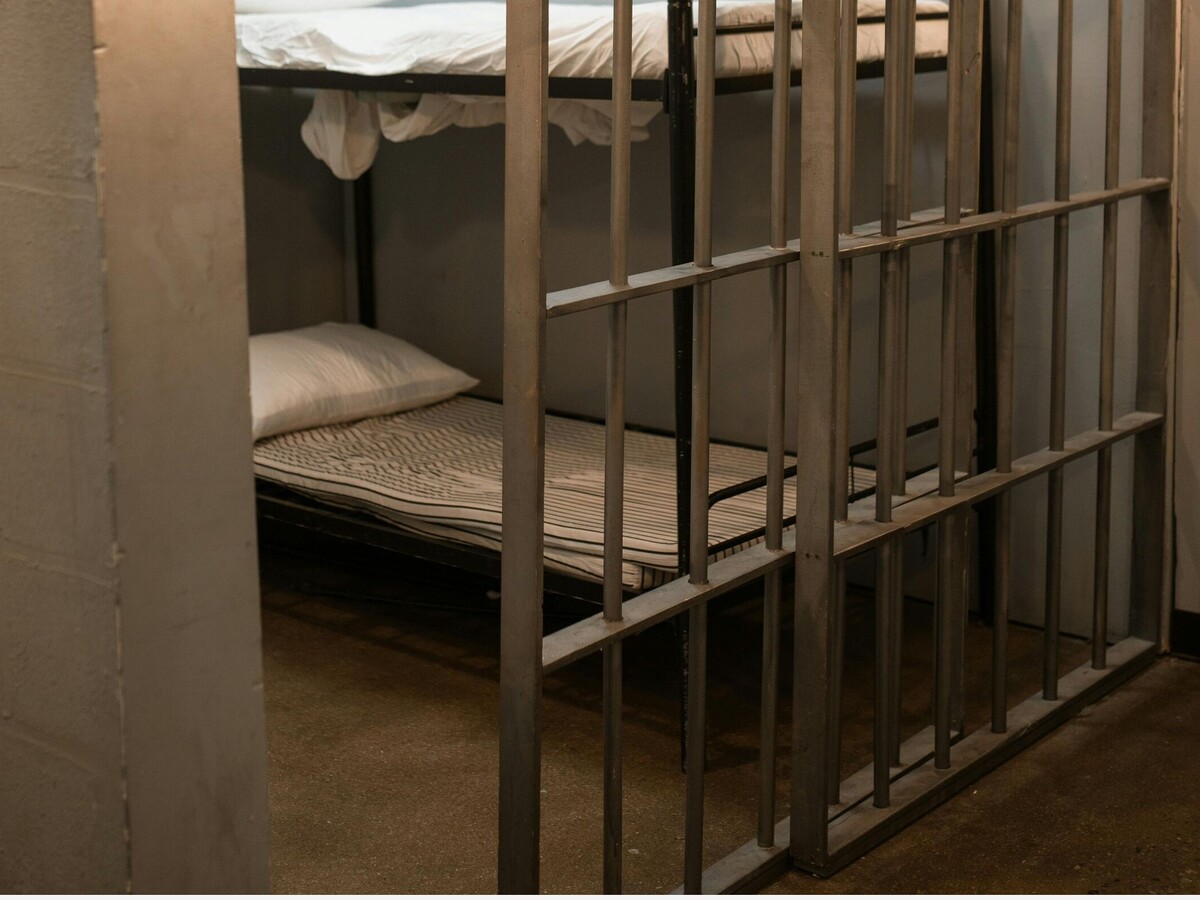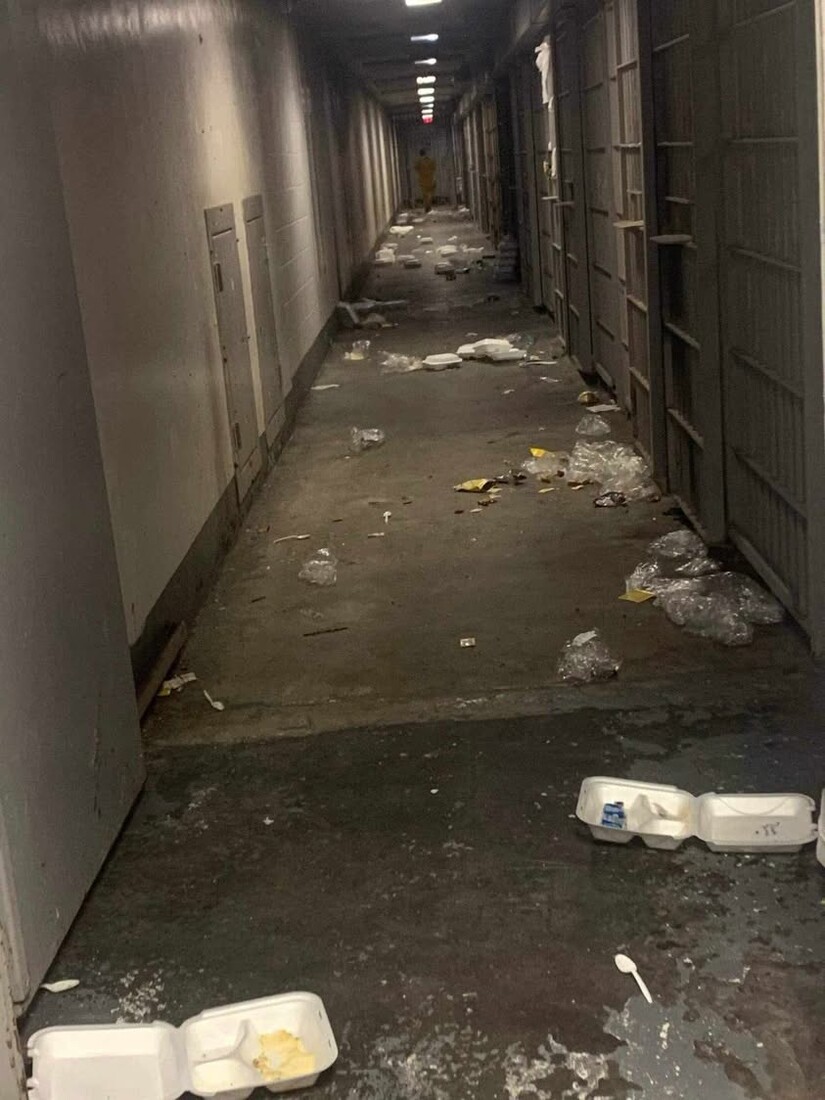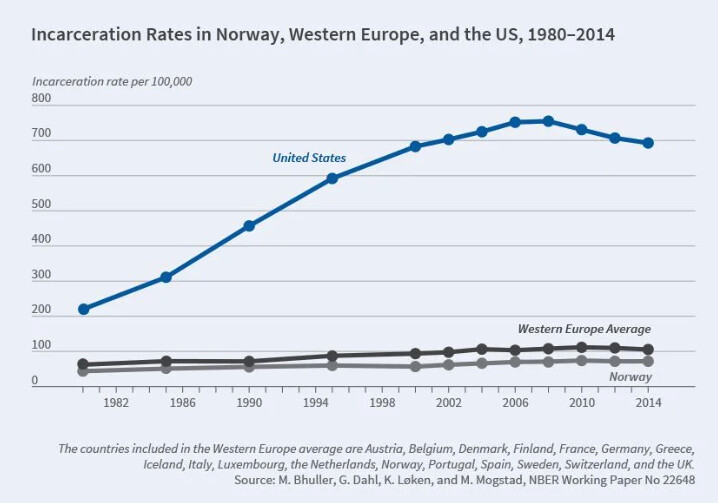Image


The Bibb County Jail has been the scene of several recent incidents that highlight the big question of whether incarceration should primarily be about punishment or a way to help rehabilitate the many people currently imprisoned in the United States.
Based on some of the recent reports about conditions in Bibb County's jail, it is hard to imagine that rehabilitation is the facilities focus. The Georgia branch of the NAACP even recently called for changes to the jail due to "unsanitary conditions."
 The Human and Civil Rights Coalition of Georgia recently posted a picture on Facebook that allegedly showing the conditions of the Bibb County Jail (Photograph courtesy of the HCRCGA)
The Human and Civil Rights Coalition of Georgia recently posted a picture on Facebook that allegedly showing the conditions of the Bibb County Jail (Photograph courtesy of the HCRCGA)Other concerning stories about the Bibb County Jail include reports of 2 deaths so far in 2025 and an incident that occurred in April when an inmate suffered severe burns after fellow inmates allegedly threw scalding water on his face and head. The inmate did not report the assault and his injuries were not discovered by jailers for a while, delaying medical attention by several days and leading many to question how the gruesome injuries weren't noticed earlier.
The case of Stephen Fossett in 2024 was especially controversial because of Fossett's history of mental illness and the claim by his family that he was in a schizophrenic episode when he was tased. Fossett was an inmate who died in the jail after being tased and restrained by officers at the facility.
The United States maintains the highest incarceration rate globally, with over 1.2 million individuals in state and federal prisons as of 2022. This equates to approximately 360 incarcerated individuals per 100,000 residents. In 2021, more than five million people were under supervision by the criminal justice system, according to the Bureau of Justice Statistics.
 Graphic courtesy of the National Bureau of Economic Research
Graphic courtesy of the National Bureau of Economic ResearchGeorgia surpasses this national average, incarcerating 435 people per 100,000 residents. One important fact to consider is that a significant contributor to the high incarceration rates is the cycle of probation violations leading to re-incarceration. In Georgia, violations can be categorized as technical (e.g., missing appointments) or substantive (committing new offenses).
Incarceration in the U.S. has increased substantially in the last few decades and many in the U.S. have been jailed for petty crimes, like drug offenses or theft. Nationally, nearly half of state prison admissions are due to probation or parole violations, often for minor infractions. This cycle not only burdens the justice system but also imposes financial and emotional costs on individuals and communities.
Additionally, there are cases of false accusations and innocent individuals being arrested and charged that can lead to people being jailed without just cause.
One such case appears to be the man who has been locked up in the Cobb County Jail after he was accused of attempted kidnapping: surveillance footage appeared to show he was only attempting to keep the child from falling off its mother's motorized scooter.
The many individuals who are not hardened criminals, including those that were arrested for petty crimes or those who were imprisoned unjustly. should further cause us to reflect whether we want our justice system to only punish with harsh conditions and severe punishments.
It is a fair question to ask whether rehabilitative models work to keep people from reoffending.
Contrasting with punitive approaches, several correctional systems worldwide have implemented rehabilitative models with notable success.
Norway's Prison System: Norway emphasizes rehabilitation through education, vocational training, and therapy. This approach has led to a recidivism rate of approximately 20%, significantly lower than many other countries.
Healing Lodges in Canada: Designed for Indigenous offenders, these facilities focus on cultural reconnection and healing. Participants have shown lower reoffending rates and improved reintegration into society.
EcoSólidos in Panama: This inmate-led recycling initiative at La Joyita prison has reduced recidivism from 65% to 45% and improved prison conditions. The program has expanded to other facilities and inspired similar efforts in Latin America.
Rehabilitation Through the Arts (RTA) in New York: Programs like RTA at Sing Sing Correctional Facility use arts to foster personal growth among inmates. Participants have a recidivism rate of less than 3%, compared to the national average of around 60%.
The high recidivism rate (meaning how many prisoners return to jail) appears to indicate that punishment is not working as an effective method to keep people from reoffending. 70% of prisoners released in 2005 were reportedly rearrested for new crimes within 3 years and 75% were rearrested within 5 years, according to the National Institute of Health.
The debate over the primary function of prisons - punishment versus rehabilitation - remains complex. Advocates for incarceration as rehabilitation argue that addressing underlying issues such as substance abuse and providing educational opportunities can reduce recidivism. Conversely, proponents of a punitive approach emphasize deterrence and retribution.
Many families in Middle Georgia have at least one member that is currently incarcerated or who has been incarcerated in the past. Regardless of which side you stand on, the fact is that the people currently imprisoned are still people, many of whom are loved by people who are on the outside.
I would hope that we as a society could agree that imprisoned people should not be treated as less than human even if they have broken laws.
The challenges facing the prison system in Georgia and across the United States call for a approach that considers both the need for public safety and the potential for rehabilitation. Continuing to ignore the apparent issues in our prisons is not going to make things better for those of us on the outside or for the more than 1 million people currently imprisoned in the U.S.